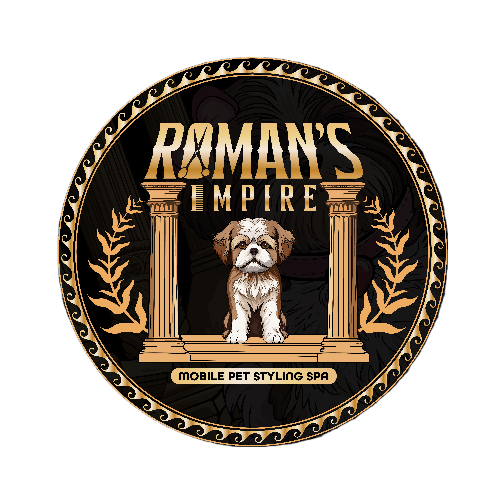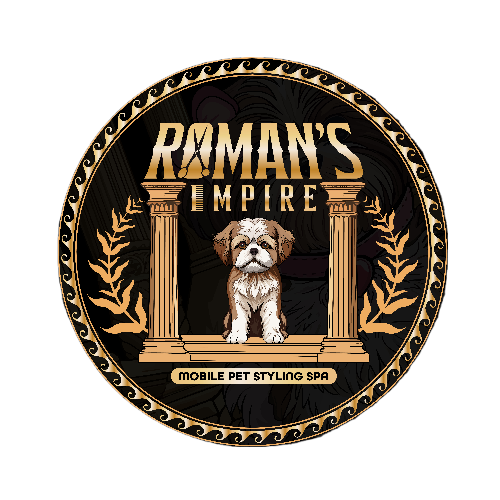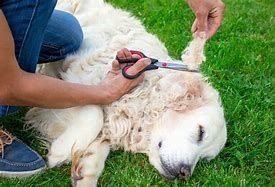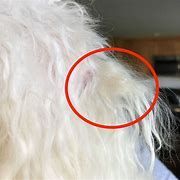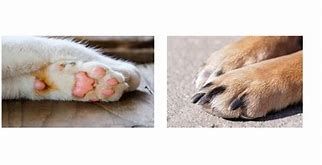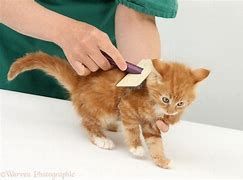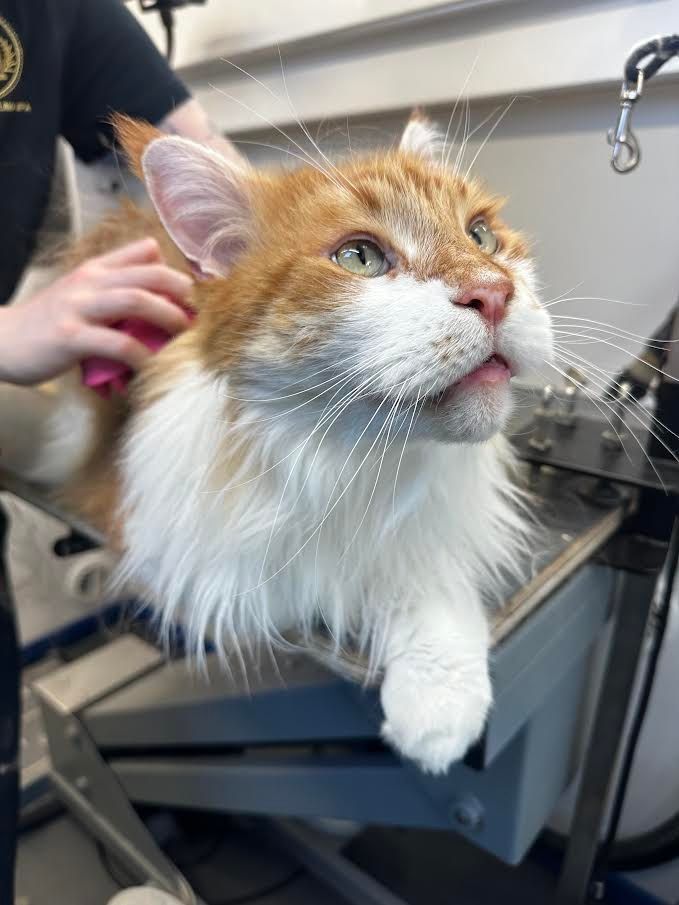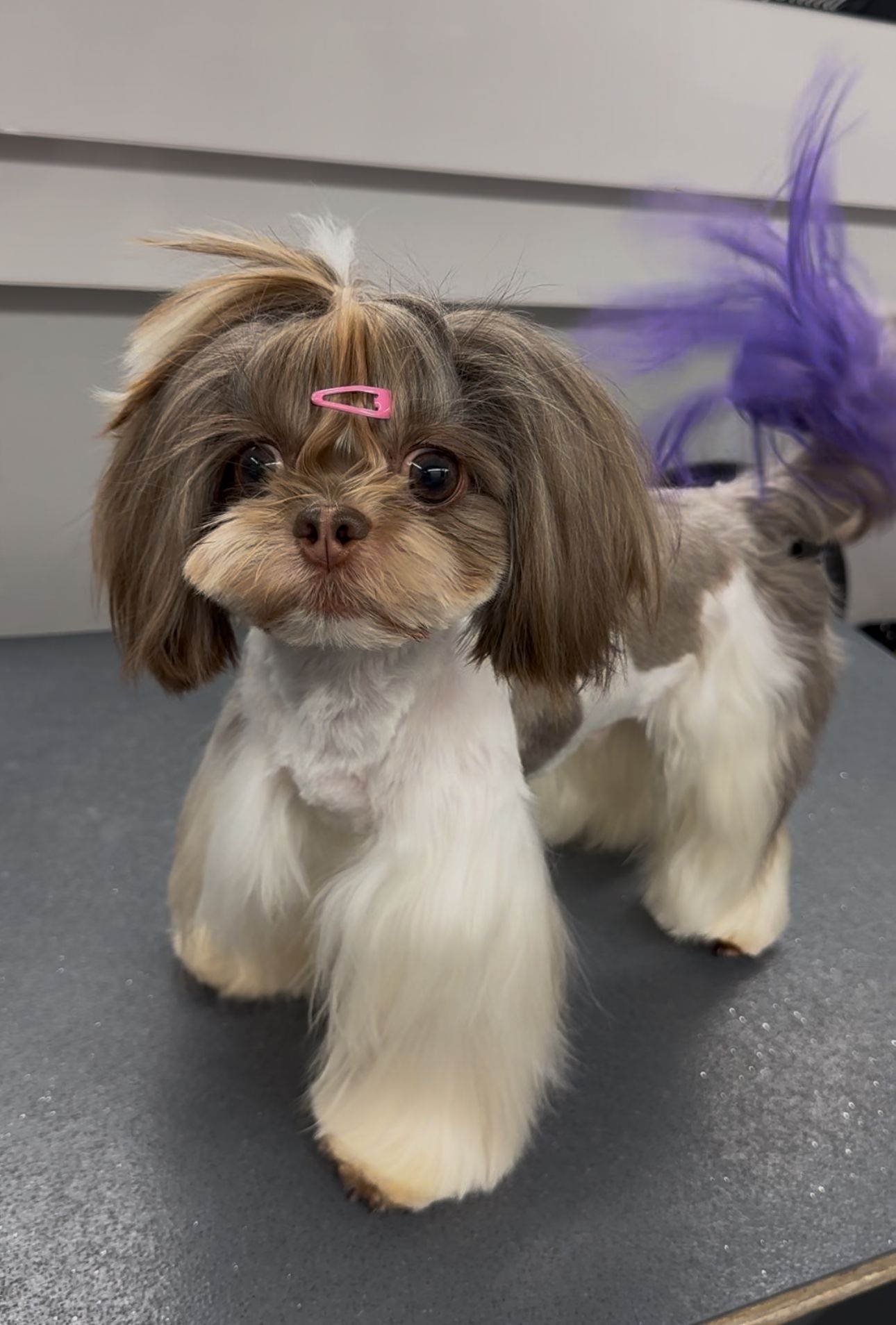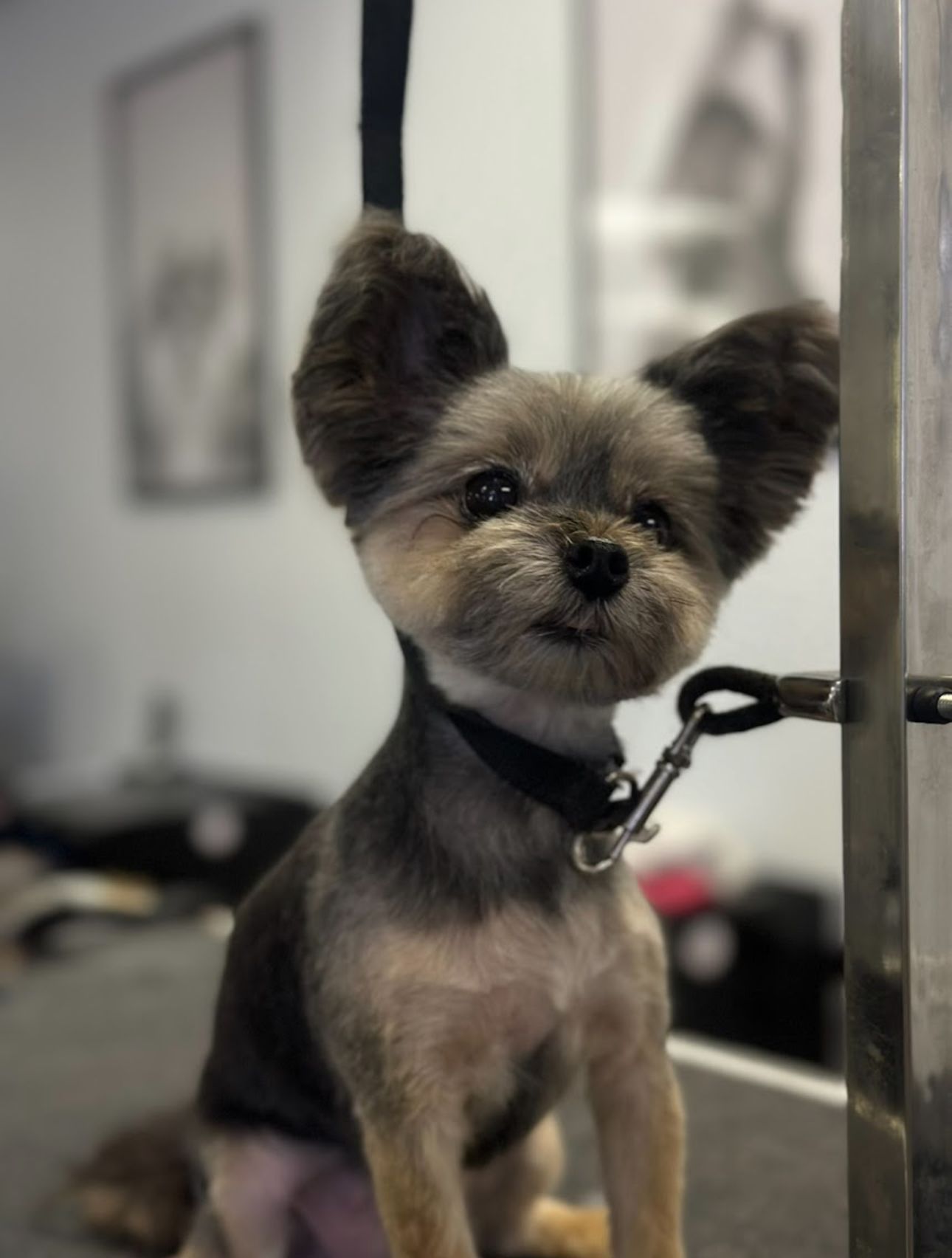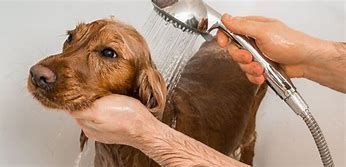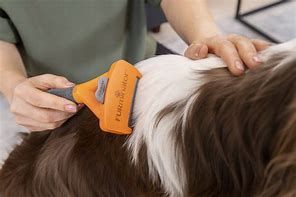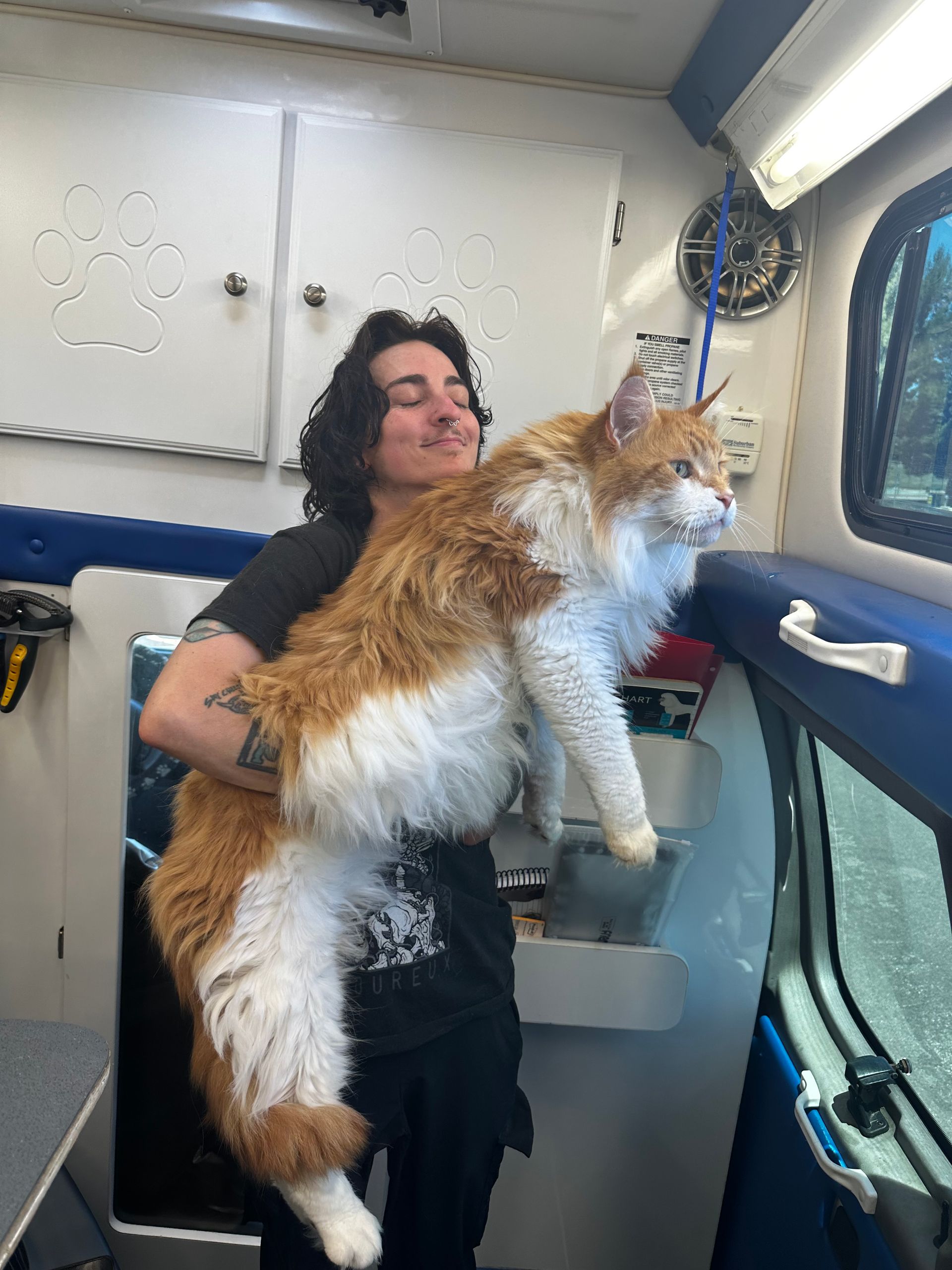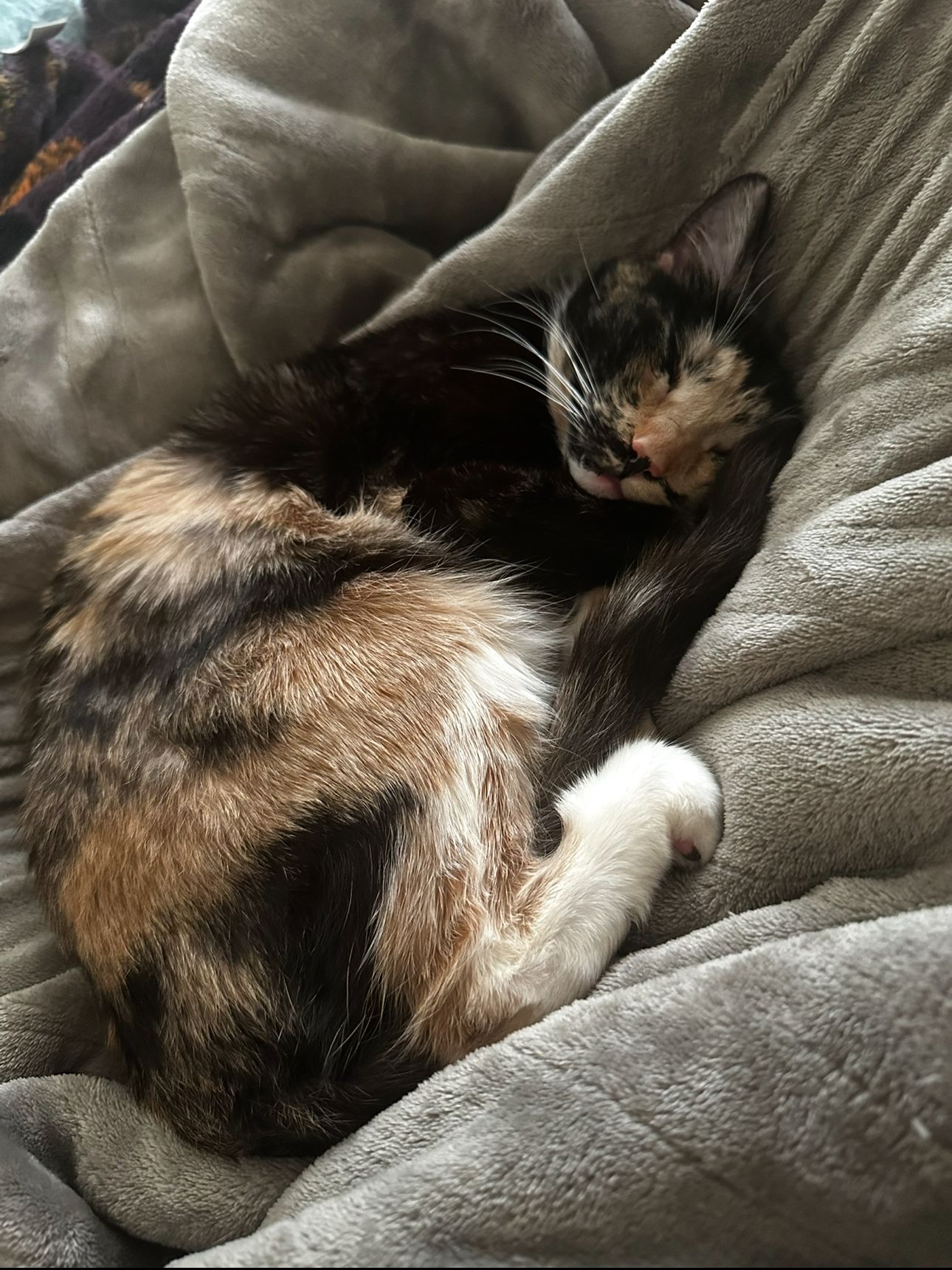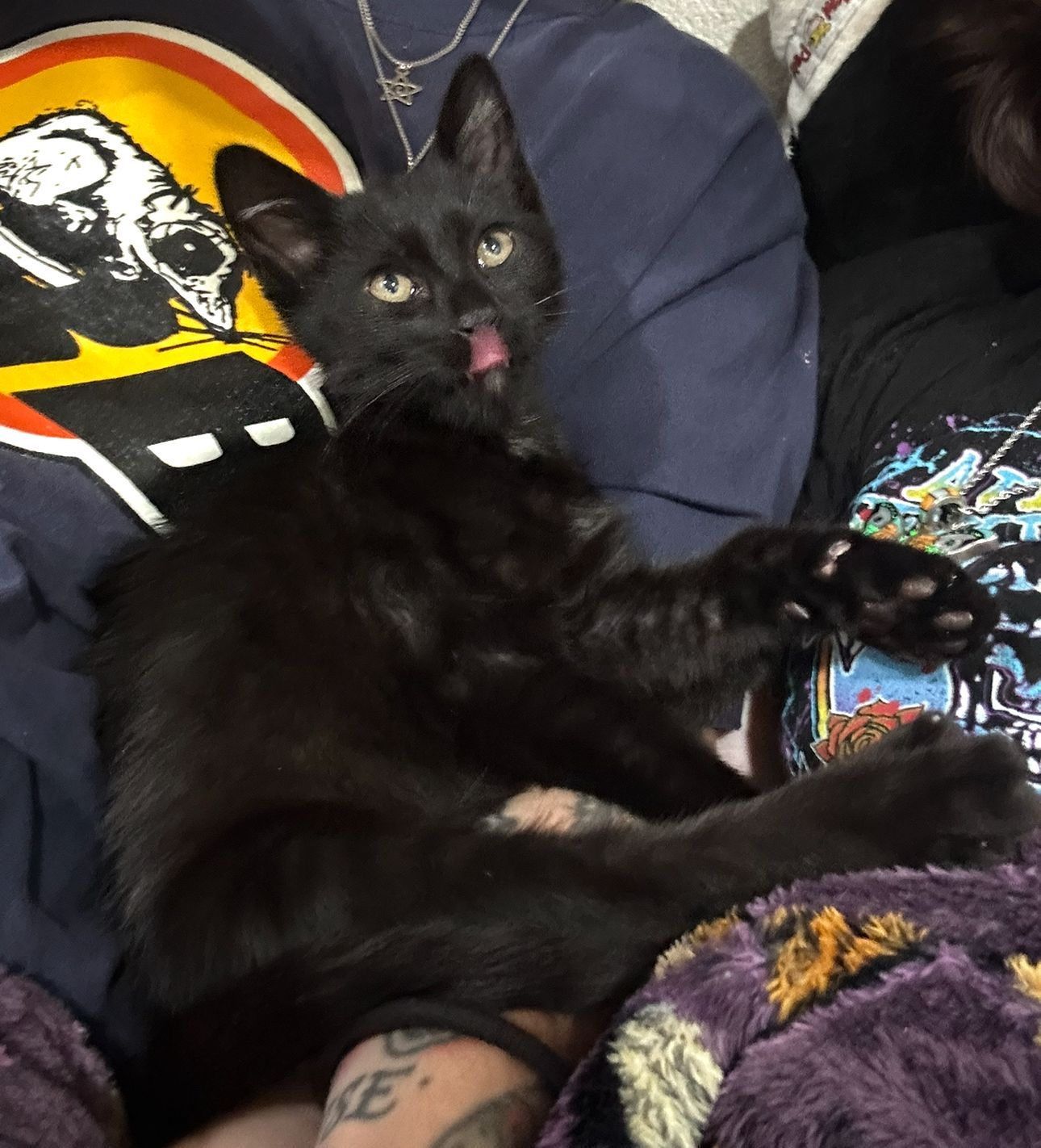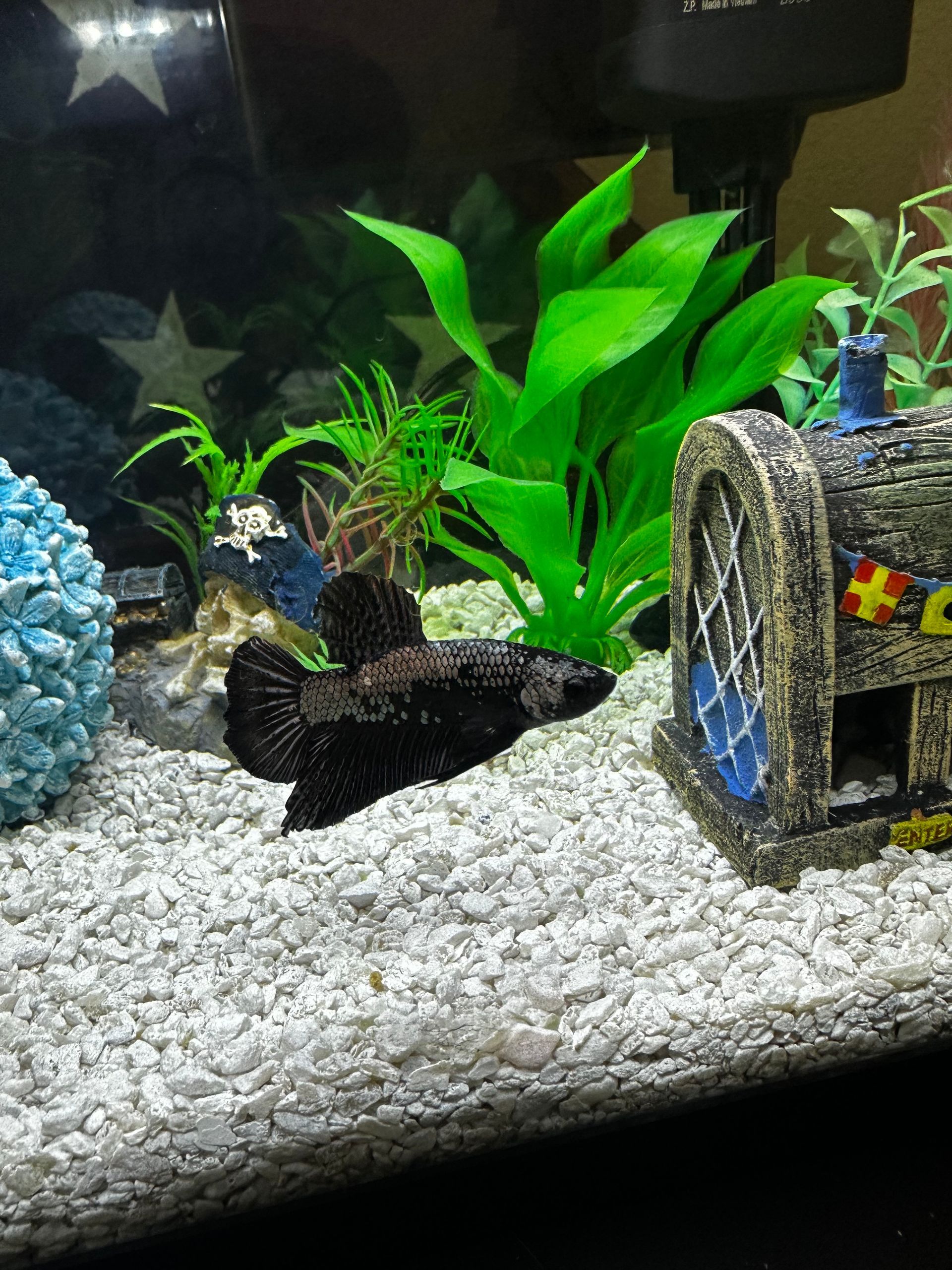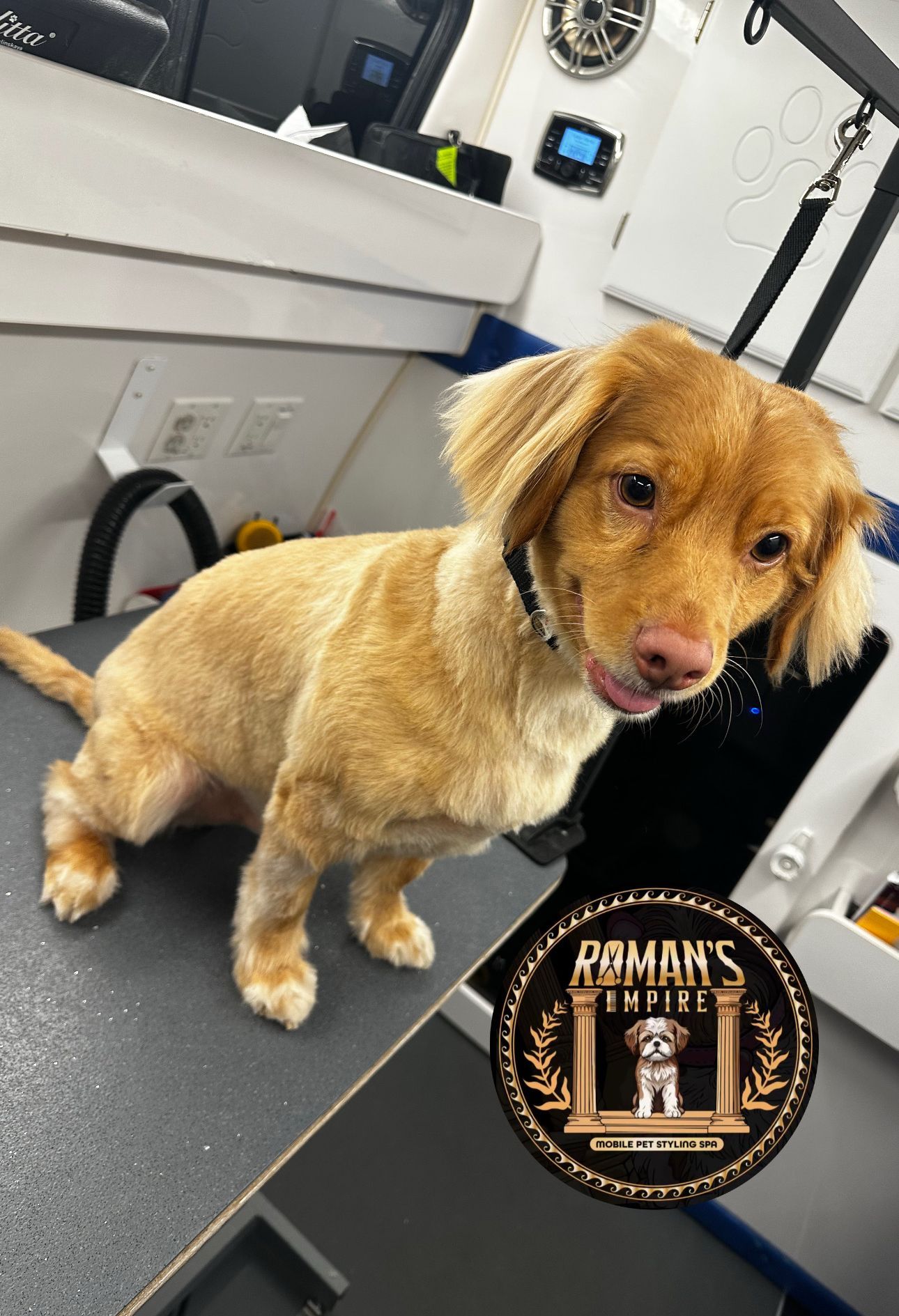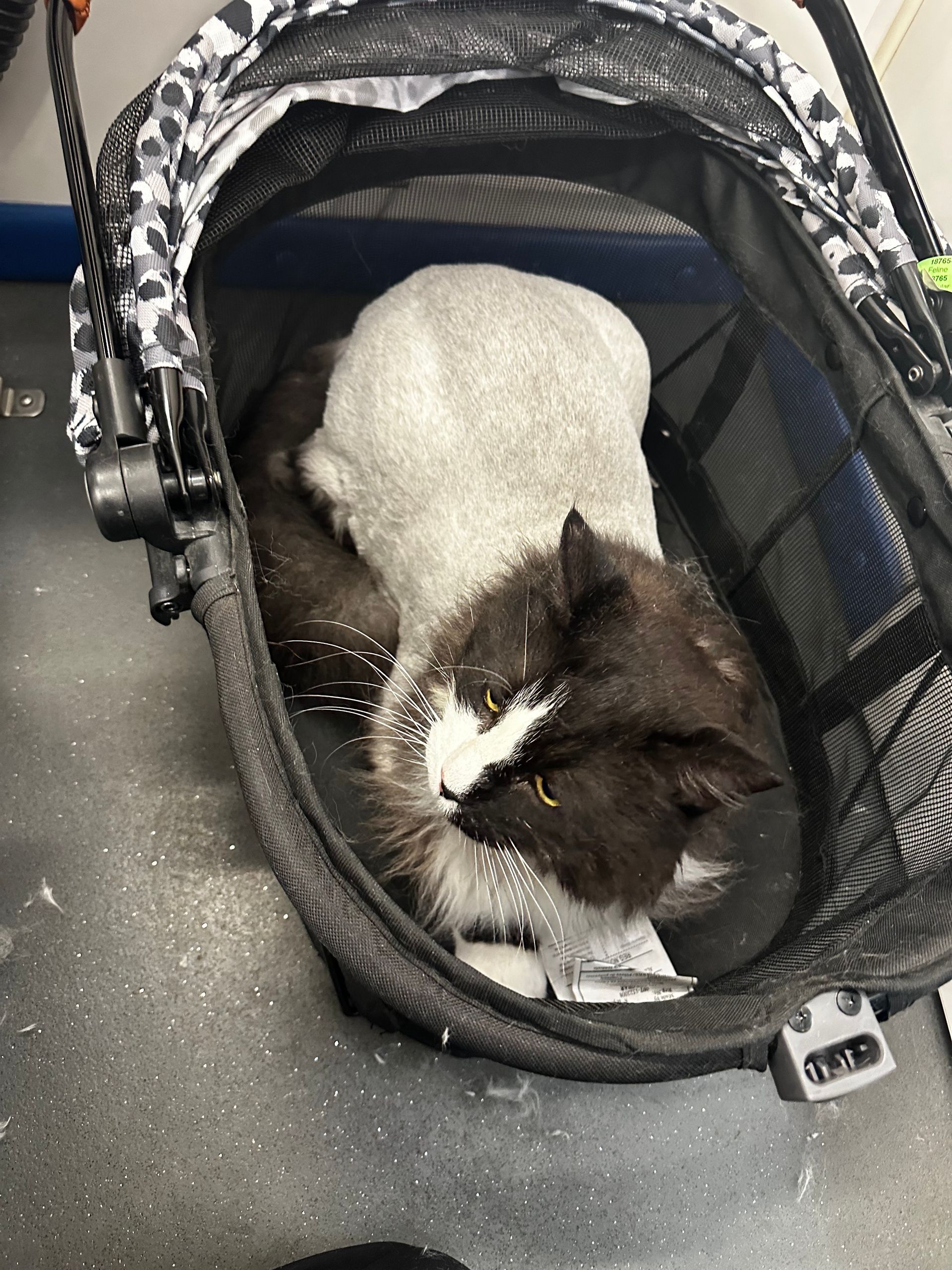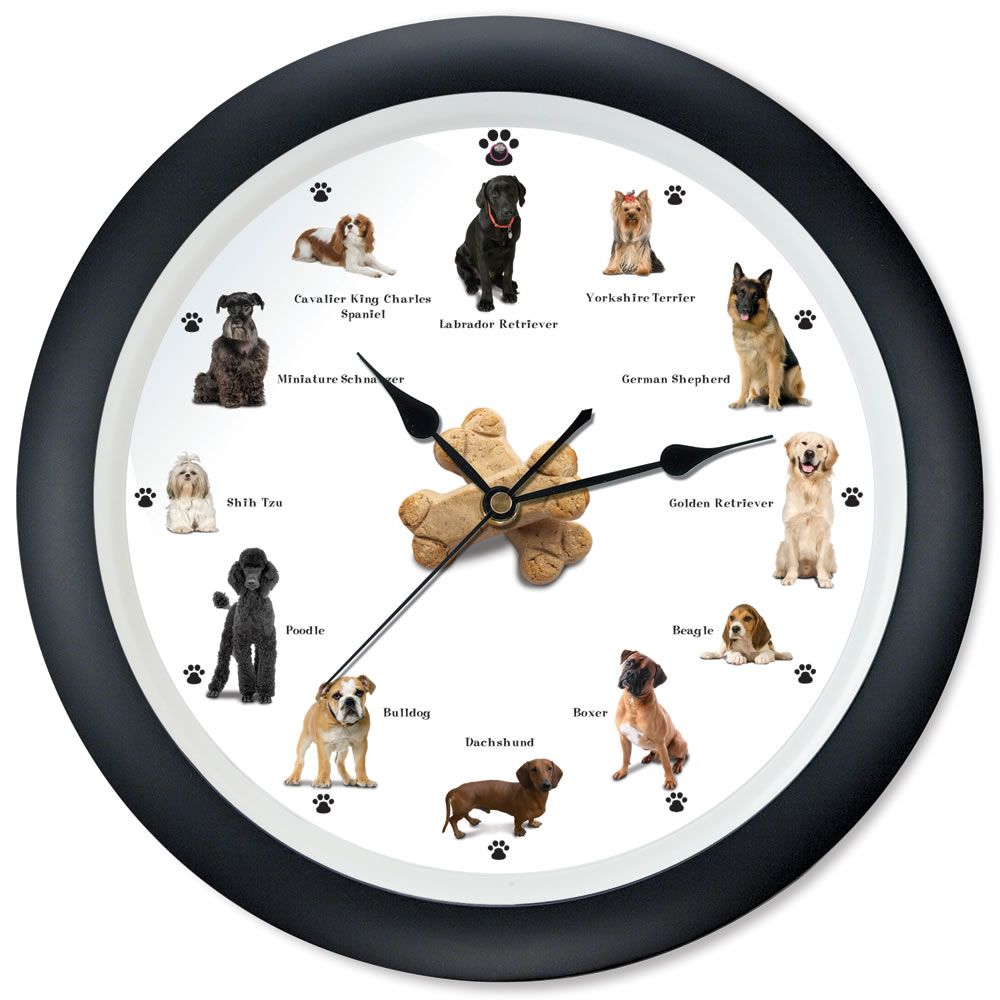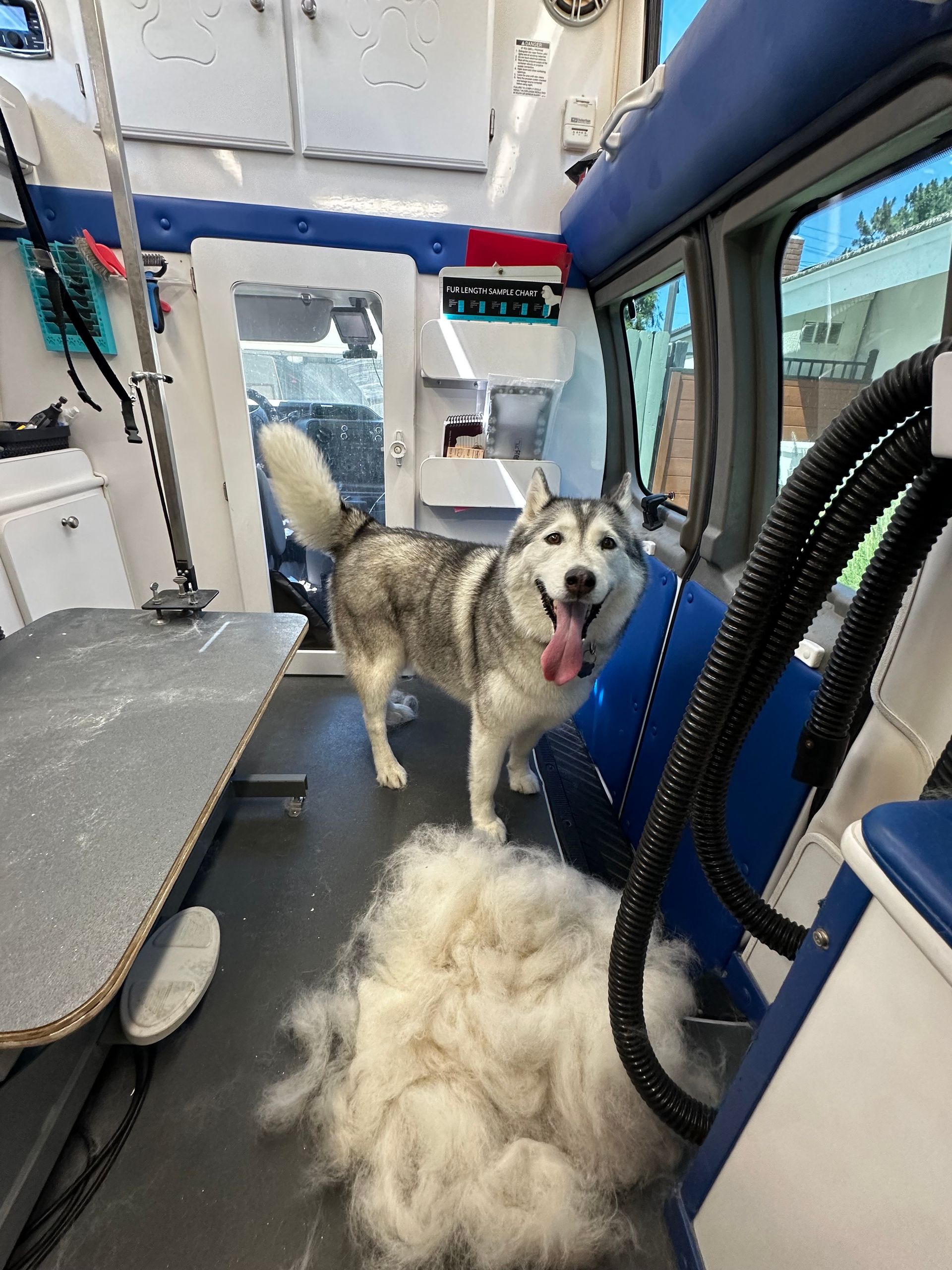Correlation Isn’t Causation: Why Grooming Can Reveal or Exacerbate Preexisting Conditions
One of the most misunderstood aspects of professional grooming is what happens when a pet seems to “suddenly” become ill or agitated after or during a visit. Pet parents may assume the groomer did something wrong—but often, the grooming process has simply uncovered or aggravated something that was already there.
Grooming Requires Stamina—And That’s Overlooked
A professional groom isn't just a bath and a blow-dry. It's a physical and mental workout that can last 1–3 hours or more depending on coat condition, size, breed, and behavior. Your pet must stand, shift positions, be touched all over, tolerate loud equipment, and maintain cooperation for an extended period. This requires a surprising amount of stamina.
Just like you'd struggle to complete a workout while under the weather, pets with underlying conditions or limited endurance will struggle to tolerate a full groom—sometimes even reacting in ways they wouldn’t when healthy.
Stress and Physical Agitation Can Trigger Symptoms
Grooming may appear to be the “cause” of a new symptom, but more often, it’s simply what revealed it. Physical stimulation, standing still, and the natural stress of grooming can:
- Aggravate arthritis or joint pain
- Trigger symptoms of collapsing trachea during restraint or handling
- Exacerbate seizure disorders or neurological issues due to overstimulation
- Cause gastrointestinal upset from prolonged stress or adrenaline buildup
- Uncover skin sensitivities, lumps, or wounds hidden under thick fur or matting
- Increase respiratory effort in brachycephalic breeds (like Bulldogs, Pugs, or Shih Tzus)
- Trigger cardiac symptoms in pets with unknown heart conditions
Hidden Health Issues Aren’t Always Visible Until Grooming
You can’t always see or know what’s happening under a thick or matted coat. During grooming, we may uncover:
- Hot spots, rashes, or wounds
- Ear infections masked by buildup or odorless debris
- Dental issues when cleaning the mouth reveals inflammation or pain
- Masses, tumors, or cysts
- Flea infestations or skin parasites
The moment these things are discovered, owners can be quick to assume they “happened” at the groomer, but they didn’t—they were simply revealed.
Grooming Tolerance Can Decline with Age or Illness
Pets who once handled grooming well may suddenly show signs of stress, fear, or resistance. That’s not bad behavior—it’s often a red flag that something deeper is going on.
For example:
- A once-tolerant senior dog may start trembling or snapping due to cognitive decline or pain.
- A cat who previously cooperated may now be hypersensitive from arthritis or dental discomfort.
- A typically mellow pet may show reactivity due to thyroid imbalance, nerve pain, or early organ failure.
This shift isn’t a behavior issue—it’s your pet communicating a physical or emotional change.
Learn more about how senior pets have a specialized grooming routine.
Aggression is a common response to pain, discomfort, or lack of tolerance and stamina--telling us to stop. Explore why ethical groomers proceed with caution or cannot accommodate aggression in the salon.
Your Groomer Isn’t a Vet—But We Notice A Lot
Ethical, experienced groomers often notice early signs of health changes, especially when seeing a pet on a regular schedule. We may notice subtle things like:
- Coat thinning
- Muscle loss
- Lumps and bumps
- Increased sensitivity in specific areas
- Changes in behavior, breathing, or body language
We will always share concerns with you, but our role is not diagnostic. We work hard to support your pet’s health while staying within our scope of care.
Communication and Partnership Matter
If your pet struggles through grooming, seems “off” after a visit, or has new symptoms arise, it’s not a sign something was done to them—it’s a sign that something may be going on inside them.
What you can do:
- Keep your pet on a regular grooming schedule to monitor physical changes over time
- Notify your groomer of any new medical conditions or medications
- Watch for subtle changes at home that may show up during grooming
- Maintain veterinary checkups, especially as your pet ages
Groomers are part of your pet's wellness team. We care deeply, we notice a lot—and we do our best to make the process as smooth, safe, and stress-free as possible.
What Grooming Commonly Uncovers
A proper groom often brings preexisting problems to light, including:
- Hot spots and skin infections
- Fleas, ticks, or other parasites
- Lumps, cysts, or tumors
- Signs of allergies or poor nutrition
- Matted fur hiding sores or embedded debris
- Ingrown nails or broken teeth
- Anal gland issues
- Behavioral red flags indicating fear, anxiety, or pain
Here are some common examples:
- Arthritis or joint pain: Dogs with undiagnosed arthritis may struggle with standing for extended periods, lifting limbs for nail trimming, or being placed on a grooming table. Grooming may trigger limping, sensitivity, or fatigue, but the condition was already present.
- Collapsed trachea or respiratory issues: Pressure from grooming loops (which are used for safety, not control) or even stress from the appointment can highlight breathing trouble — often seen in breeds predisposed to airway disorders like Shih Tzus, Pomeranians, and Poodles.
- Heart conditions: Elevated stress levels during grooming can cause lethargy, coughing, or collapse in pets with undiagnosed heart disease. A sudden change in behavior during or after grooming may prompt a veterinary exam that leads to a diagnosis.
- Neurological disorders: Dogs with nerve issues may tremble, act confused, have trouble balancing, or become reactive to touch. These signs may be interpreted as behavioral, but grooming often brings neurological conditions to the surface.
- Dental disease: Handling the face, especially during drying or face trimming, can reveal pain or swelling from infected teeth or gums. Many owners are unaware of advanced dental issues until a groomer notices sensitivity or odor.
- Allergies and skin sensitivities: While a bath can help soothe some skin conditions, it can also expose raw or inflamed areas once dead fur and dirt are removed — revealing how serious the irritation really is.
- Eye, ear, or anal gland issues: These are frequently inflamed or impacted without obvious symptoms. Groomers often detect them during routine cleaning or expression and alert owners to get veterinary care.
These conditions don’t magically appear during the groom—they’ve often been developing under the surface for days, weeks, or months.
Why You Might Not Have Seen It Before
Thick, dirty, or matted coats can hide a multitude of problems. A dog that never shows discomfort at home might react completely differently in a new environment when their body is being handled from head to toe.
In some cases, simply removing matting or built-up debris allows oxygen to reach the skin again, making hidden wounds, irritation, or infection suddenly apparent.
“He’s Never Had This Issue Before” Doesn’t Mean It’s Not Real
One of the most common pushbacks groomers hear is:
“He’s never acted like this before,” or “No one else has had a problem grooming him.”
It’s understandable to be surprised when your pet reacts differently—but grooming isn’t always the same experience every time, nor are pets static in how they feel or tolerate things. A dog who’s handled grooming well in the past may struggle one day due to:
- An underlying medical condition that’s now progressing
- Aging-related discomfort that’s only just becoming noticeable
- A negative experience they had elsewhere that’s affecting their trust
- Shifting tolerance from cumulative stress or overstimulation over time
- A groomer who finally spoke up about behaviors or red flags others ignored
Sometimes, your groomer is the first person to tell you the truth—not because others didn’t notice, but because they didn’t want the confrontation or didn’t prioritize your pet’s long-term well-being.
Just because something wasn’t seen or said before doesn’t mean it wasn’t there.
A fresh set of eyes, ethical standards, and a focus on honest communication may be the only difference—and it’s one that benefits your pet in the long run.
Matting Is a Health Risk—Not Just a Style Concern
Severely matted coats trap moisture, bacteria, and even urine or feces against the skin. Underneath, sores can form. Infected skin can tear. Tight matting can cut off circulation or hide embedded objects like burrs or foxtails.
When these conditions are uncovered, it may feel sudden—but it's not sudden to your pet, and it's not caused by the groom. It's the result of neglect, even if unintentional.
The Importance of Routine Grooming
Prevention is the best medicine. Regular grooming isn’t just about aesthetics—it’s a vital part of your pet’s healthcare. Consistent appointments allow us to catch potential problems early, before they become serious.
Your groomer may be the first person to notice a tumor, a new limp, or a skin condition. That makes us a crucial part of your pet’s wellness team—not the cause of its issues.
Explore our cooperative care approach here.
Why Your Groomer Isn’t to Blame
Let’s say your dog comes back from a groom with a rash, a limp, or acting sore. It’s understandable to feel concerned. But it’s important to understand:
- Wet coats reveal more than dry ones. Dirt and oils can mask skin damage.
- Post-groom sensitivity is real. Especially with thick or matted coats, some dogs may be sore after a necessary shave-down or dematting session.
- Older dogs or dogs with undiagnosed issues may show signs after the physical handling and standing required during grooming.
- Shaking, limping, or soreness doesn’t automatically mean something was done wrong—it can mean something was already wrong.
How to Protect Your Pet and Your Peace of Mind
- Stay on a schedule. Frequent grooming prevents matting and lets us monitor your pet’s condition regularly.
- Communicate with your groomer. Share any health updates or behavioral changes.
- Understand the risks of neglect. Long gaps between grooms increase the chance of hidden issues.
- Partner with a vet. When we spot something, your vet is the next step—not a Google search or finger-pointing.
At Roman’s Empire, We Don’t Guess—We Groom with Purpose
We take our role seriously. We groom with knowledge, compassion, and transparency. If we notice anything, you’ll be the first to know—not because we caused it, but because we care enough to tell you.
Because loving your pet means caring for all of them—even the parts you can’t see.
